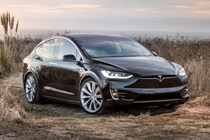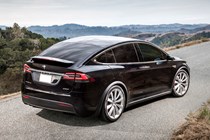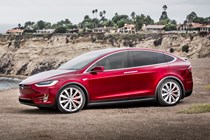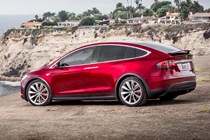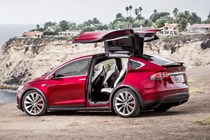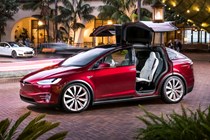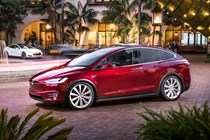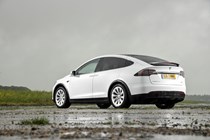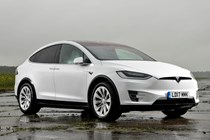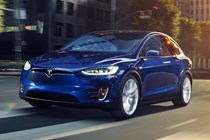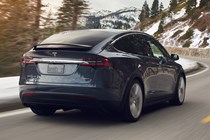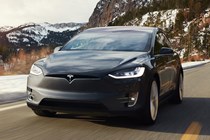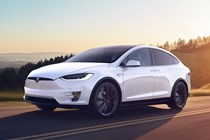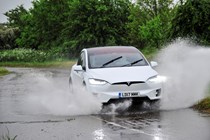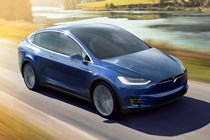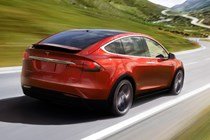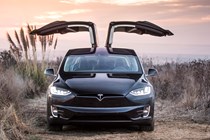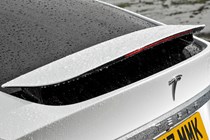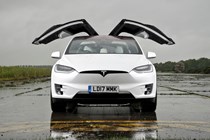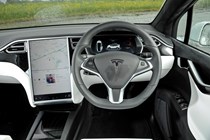Tesla Model X running costs and reliability
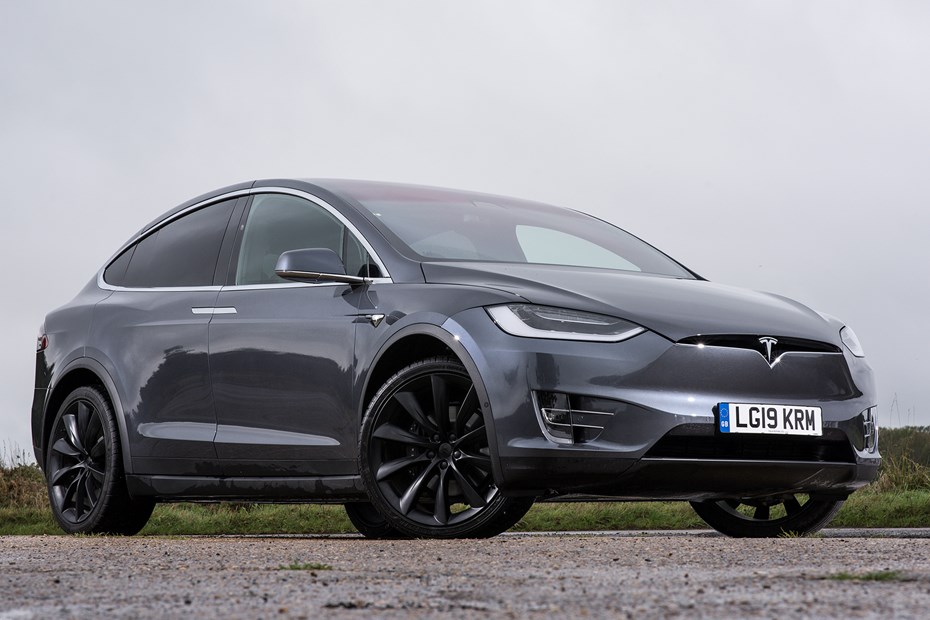
Miles per pound (mpp) ⓘ
| Electric motors, home charging | 7.6 - 9.7 mpp |
|---|---|
| Electric motors, public charging | 4.1 - 5.2 mpp |
Fuel economy ⓘ
| Electric motors | 2.6 - 3.3 miles/kWh |
|---|
- All-electric power ensures tiny fuelling costs
- Free first year road tax but pricey insurance
- Four-year, 50,000-mile warranty
Currently the Tesla Model X’s price includes the £3,500 government grant, but its expensive purchase will be partially offset by lower running costs. Tesla calculates that the average driver, covering 12,000 miles per year and averaging 29.4mpg, will pay £2,250 per year on petrol at £1.20 per litre.
Based on a national average of 17p per kilowatt hour (kWh) for electricity, Tesla predicts the same driver would pay just £190 in electricity. This figure also takes into account a driver charging with Tesla’s fast-charge supercharger network for 10% of the time. It’s worth remembering that Model Xs bought from summer 2019 also benefit from free Supercharging, making the cost difference to ‘refuel’ even more attractive.
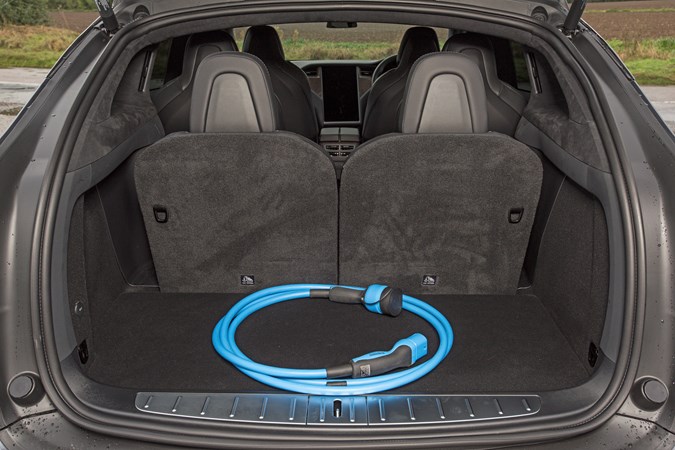
Using the free Supercharging facility, you can cover a virtually limitless number of miles per pound (mpp), but using other public chargers and home wall boxes, it’s going to cost around 4.1 - 9.7mpp.
First-year VED car tax is free due to the Tesla being a 0g/km CO2-emitting car, but between years two and six the Model X is subject to a £310 additional annual fee due to it costing over £40,000 new – but insurance for a typical 40-year-old male is approximately £850, compared with £650 for a Range Rover Sport TDV8.
While there’s no oil or spark plugs to change, Tesla recommends an annual inspection, or every 12,500 miles, whichever comes first. Costing £600-950, these checks are expensive, though a three-year/37,500-mile plan reduces costs slightly to £1800.
Decent reliability record
- Reliability is acceptable, with owners reporting a few niggles
- Fewer moving parts than petrol or diesel engines
- Any repairs to central touchscreen are likely to be pricey
The Model X has far fewer moving parts than a conventional petrol or diesel car, plus electric motors are inherently more reliable than their internal combustion equivalents. Because of this, customers shouldn’t have too much to worry about when it comes to the drivertrain reliability of their electric SUV, provided regular servicing and maintenance checks are carried out.
And in Parkers’ Model S owners’ reviews, feedback remains impressive, although there are questions over some fit and finish, and some general concerns about the quality of some of the components. However any repairs to the 17-inch central touchscreen will likely prove costly, and the electronics aren’t as rugged as the best Japanese and German opposition, as some ownership surveys are now finding.
Officially, there have been three DVSA recalls. The first, in 2016, affected 1,466 cars to remedy a potentially sticking parking brake. Two further recalls were announced in 2017: one that required work on 1,501 cars related to a potentially faulty passenger airbag, while a further 414 Model Xs were recalled to sort out a problem with the left-side third-row seat not latching in place properly when folded.
Ongoing running costs
| Road tax | £0 |
|---|---|
| Insurance group | 50 |
Get an insurance quote with

|
|



